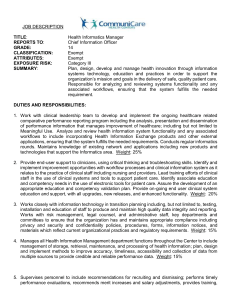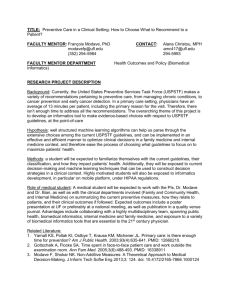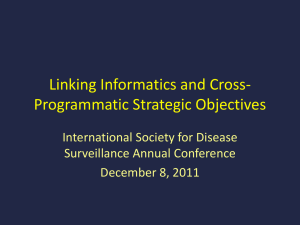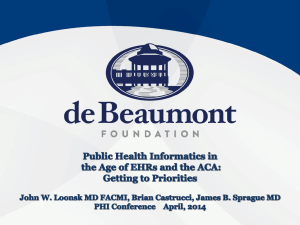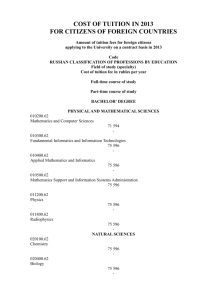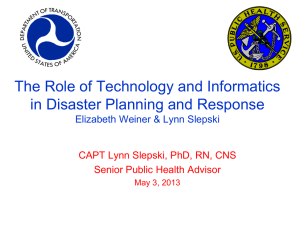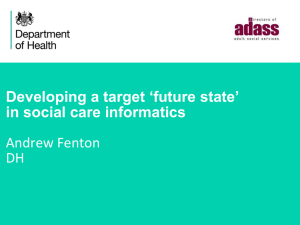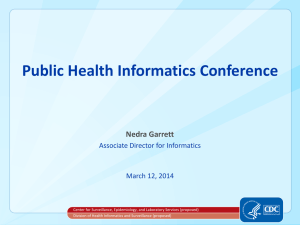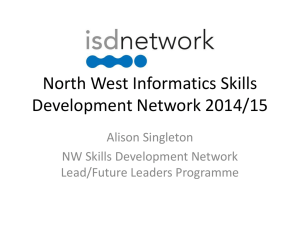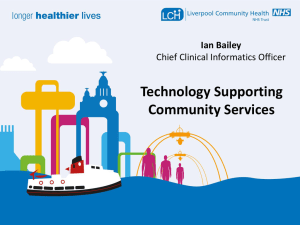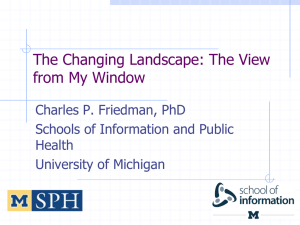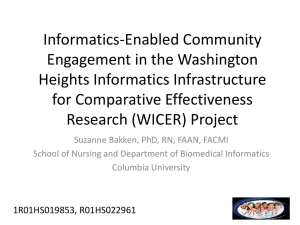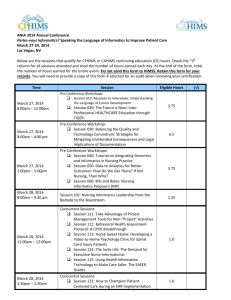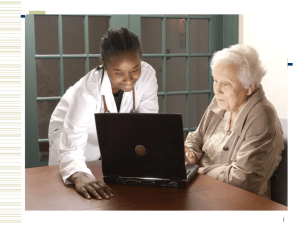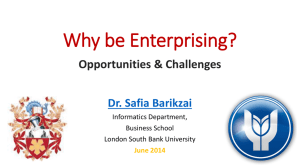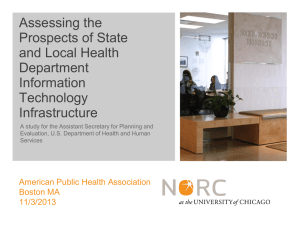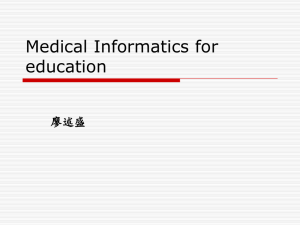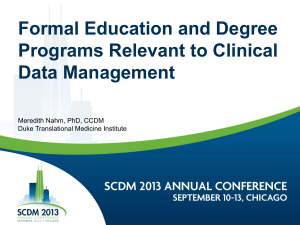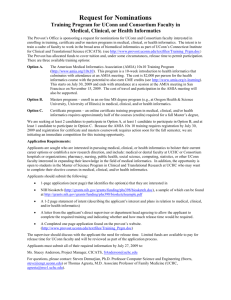Legal Informatics
advertisement
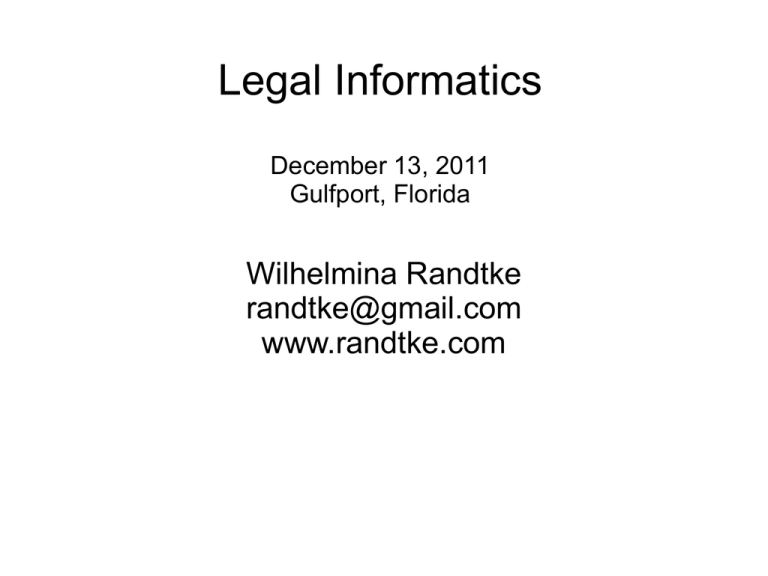
Legal Informatics December 13, 2011 Gulfport, Florida Wilhelmina Randtke randtke@gmail.com www.randtke.com Defining “Legal Informatics” "Legal informatics . . . pertains to the application of informatics[, defined as 'the study of the structure and properties of information, as well as the application of technology to the organization, storage, retrieval, and dissemination of information'¹] within the context of the legal environment and as such involves law-related organizations (e.g., law offices, courts, and law schools) and users of information and information technologies within these organizations." Sanda Erdelez & Sheila O’Hare, Legal Informatics: Application of Information Technology in Law, 32 Ann. Rev. Info. Sci. & Tech. 367, 367 (1997) (a heavily cited definition). law (noun). the principles and regulations established in a community by some authority and applicable to its people informatics (noun). the study of information processing; the collection, classification, storage, retrieval, and dissemination of recorded knowledge Conceptual Background: Changes within the Legal Field Automation vs. Innovation (Susskind) Automation = doing the same tasks more efficiently Innovation = doing completely new tasks Deterministic vs Uncertain (Surden) Deterministic tasks are easier to automate Managerial Legal Informatics (areas from Lucchi) = automating legal tasks Documentary Legal Informatics = electronic legal research tools, like databases Decisional Legal Informatics = software for decision making Legal Informatics: Past Changes 1980s: Widespread use of electronic databases WestLaw and LexisNexis Automation (old things done faster) Citation trails and Shepardizing – now cases in a citation trail are just a click away. Headnotes and keynotes – must faster to browse these when not in book form Innovation (new things which weren't done before) Blast from the Past!!! (Automation = doing the thing more efficiently) same Something New (that already happened) Keyword search changed the nature of legal research. See Jill Anne Farmer, A Poststructuralist Analysis of the Legal Research Process, 85 L. Libr. J. 391 (1993). Something New (that already happened) Model of the lawyer thought process developed by Stuart Sutton in 1985 based on studies of research using print. From Stuart A. Sutton, The Role of Attorney Mental Models of Law in Case Relevance Determinations: An Exploratory Analysis. 45 J. Am. Soc'y Info. Sci. & Tech. 186 (1994). Similar modeling in Fastcase today. What's happening now? Progression of legal services from Susskind's End of Lawyers? Practical Applications Computer programs apply laws 1) put the laws and regulations into formal logic • Is the area of law certain or less certain? • Do we want ambiguity for policy reasons? (people can opt in to a more certain system) 2) make questions/queries about facts that align the facts with the legal structure • Facts can come from a person (ex: yes/no questions to fill out a form) • Facts can come from a computer (ex: program queries a database) 3) find matches and mismatches • Can build compliance into the system (ex: overtime pay and employee time system; ex: vendor's system orders parts when the customer orders the product) • Lots of mismatches may suggest law should be changed. Commoditized Law Easier because – IRS wants people to succeed (wants forms to be easy) – No adverse party Seemingly more difficult – Tax is a complex area – Tax law is probably more difficult for an entry level lawyer to navigate than is county court Successful: Millions of efilings go through. Commoditized Licenses Lay people click through questions to select a license. Widespread use means search engines can search by license. Most of this activity is a new market – no one would hire a lawyer to write a license for small content reuses. Some Projects Done in the Open Next steps in licensing: embedded licensing Embedded Licensing: SIPX - Stanford Intellectual Property Exchange - License terms are embedded in material, and reuse permissions can be read by computer. Law built into systems Monitoring business processes and checking for compliance with regulations Timecard systems which check for and pay overtime. Opting in to a private system Mortgage Electronic Registration Systems, Inc. (MERS) - When a mortgage is reassigned, recording requirements apply, down to the county level. - An alternative is to record the mortgage to MERS, and MERS tracks ownership (2/3 of U.S. mortgages ) Points to Remember Research in this area is often not published, and may even be trade secret. Research by firms and database companies - WestLaw Next: Thousands of hours studying how lawyers used the system was released in the form of product improvements, not publication. - Knowledge management at law firms leads to internal changes. - In house software at firms will be released only in the form of products, and only if a firm realizes it can license that product. Harder for academics (ie. people who tend to publish) to research - Much of this study involves a human component, so there are restrictions on academic research (ie. IRB approval) - Studies on lawyers and practice of law raise some specialized confidentiality issues. Legal Informatics December 13, 2011 Gulfport, Florida Wilhelmina Randtke randtke@gmail.com www.randtke.com


